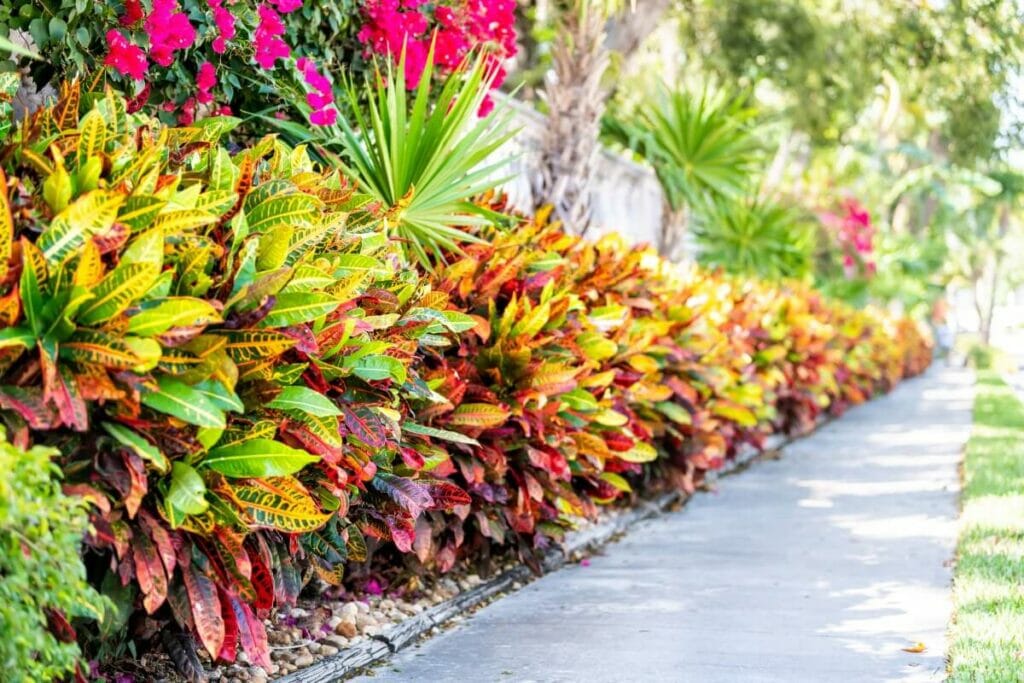Table of Contents
Croton’s name comes from the Greek word ‘kroton’, meaning ‘tick’ referring to the shape of the plant’s seeds. With hundreds of varieties, Crotons make an excellent choice for plant lovers to add to their home garden. From Dreadlocks to Ann Rutherford, Mona Lisa, and Irene Kingsley, there are various options to choose from.
Some of the key classifications of the crotons are the variety of leaves, such as curled, twisted, oak-shaped, narrow board, and oval. A lot of croton varieties showcase large-hued, sizable leaves in the shades of red, orange, green, purple, yellow, and bronze, reaching a height of 3 to 6 feet.
Despite their resilient nature to diverse growth conditions, crotons require proper care and nurturing to maintain their health and growth. In this guide, you will find essential tips and techniques to grow and care for your Croton plant.
How to Keep Your Croton Houseplant Flourishing
1. Planting Techniques for Croton Houseplant
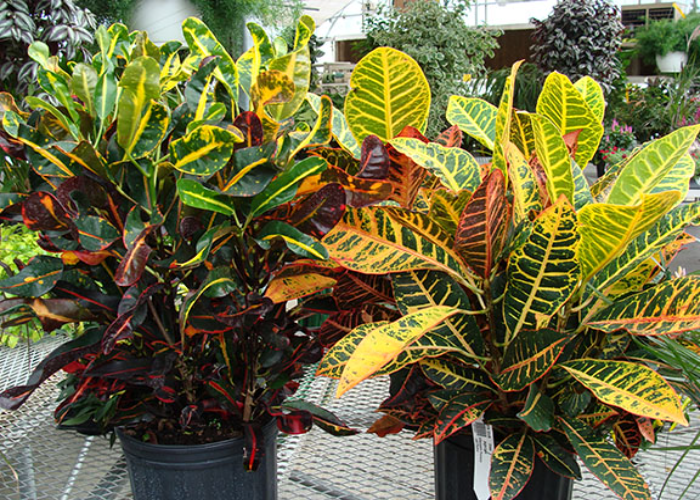
As the crotons grow upright and become top-heavy, it is important to select a robust vessel that will not easily topple over. You can also transfer the Croton to a larger container over time. And since the crotons are intolerant to standing water, make sure to choose a potting mix that maintains moisture in the soil and is well drained.
Since weather plays a crucial role in croton growth, they can be planted both outdoors and indoors based on the season. During warm and humid weather, they can be grown outdoors, whereas when the temperature drops to around 10 degrees Celsius, make sure to bring your Croton indoors to protect it from the cold.
2. Proper Sunlighting for Croton Houseplant Growth
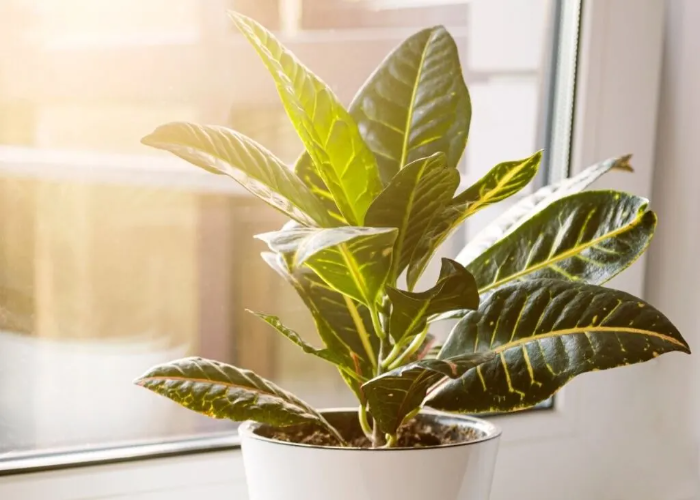
Lighting is what will give your Croton its colour and will help in its growth. You will need to place the Croton plant where there is a good bright light, but also avoid direct sunlight as Crotons cannot tolerate too much heat or too much cold. If you are planning to put the Croton plant on your window, make sure to put it at least a foot or two away from the edge because if it gets too hot, it’s going to scorch and develop brown spots. On the other hand, if it gets too little light, it may start to lose its colour. And if it gets too cold, Croton will start dropping the leaves.
Now if you are planning to plant the croton outside, then consider selecting a place that has shade but can be adjusted based on the sunlight and weather conditions.
3. Ideal Temperature for Optimal Growth
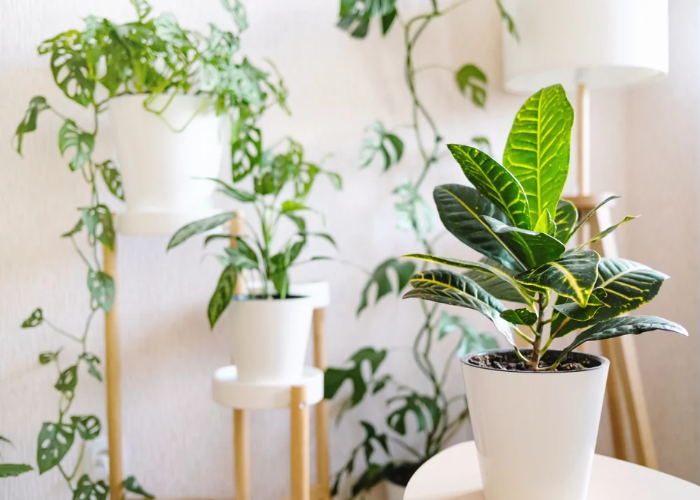
To ensure optimal growth of the Croton plant, it is important that they get the proper lighting and are kept at an ideal temperature. Crotons prefer warm temperatures, so it’s important to keep them in a room with temperatures between 60-80°F (15-26°C) to ensure proper growth. If the temple falls below 60°F (15°C), then the Corton plant can suffer frost damage or even die.
And if the temperature goes above 80°F (26°C), it can cause the leaves to turn yellow or brown and eventually fall off.
4. Humidity Level

To thrive, Crotons require high humidity as they are accustomed to high moisture levels in their natural habitats. One may want to use a humidifier or mist them to maintain the humidity level for the plant to thrive.
If the Croton plant is exposed to low humidity for a longer period of time, then its leaves start to curl up and become brown, which is a sign of dehydration. One simple solution to prevent this from happening is to place a tray filled with water and pebbles under the pot to keep the air moist.
5. Adequate Watering to Croton Houseplant
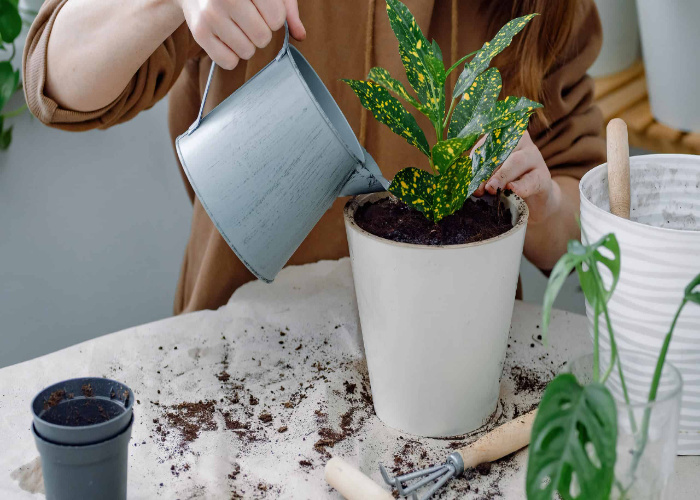
Crotons require regular watering to keep the soil moist. But it is important to remember that if they are overwatered or underwater, then their growth can easily get hampered. You can water a Croton plant once a week during the growing season and less frequently during the winter season to maintain its growth.
One important factor to consider is the temperature of the water. Using cold water can shock the root of the plan causing it to stress. To ensure that your corton plan doesn’t get damaged, use water at room temperature.
6. Application of Balanced Soil and Fertilizer
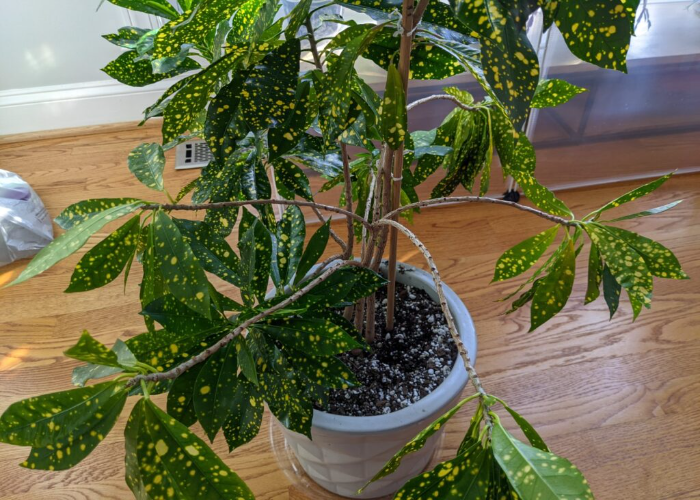
Crotons require well-draining soil that is rich in organic matter, and hence using the right soil is crucial for the healthy growth of the plant. To improve drainage, you can use a general-purpose potting mix as a base and add sand or perlite to your soil.
When fertilizing, it is important to use a fertilizer that is high in nitrogen and potassium with a low phosphorous level. During cold weather, the fertilizer should be reduced to reduced as the plant is in the dormant phase. Also, make sure you do not over-fertilize your plant; otherwise, it can lead to root damage or leaf burn.
To choose the best fertilizer for your croton, you need to keep in mind two different ratios of NPK (Nitrogen, Potassium, and Phosphorus) that are suitable for the plant.
20-20-20: In this, the amount of potassium is more.
3-2-1: This is the most preferred ratio, and the amount of nitrogen is more in this.
Note the fertilizer ratio differs for every plant and should be chosen according to the quality of the soil.
7. Pruning Techniques for Croton Houseplant
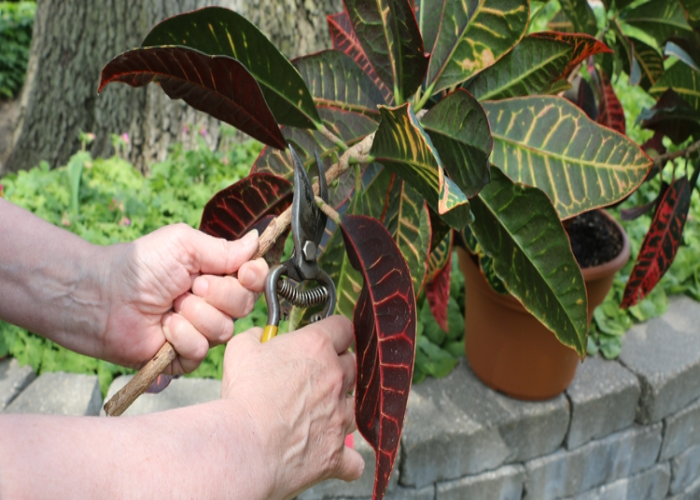
Pruning is an essential step to ensure crotons’ growth, control size and shape, and is best done in spring or summer. While pruning, make sure only to remove the unhealthy parts of the plant. Make a clean cut to avoid damaging the plant, and use a sterilized pruning shear to prevent the spread of diseases. Dead branches of the croton plant or dead leaves should be cut back to their origin, and overgrown branches can be trimmed just above the node.
To simplify when to prune your Croton plant, have a look at the seasonal break-up below:
- Spring: A perfect time to prune overgrown or leggy crotons. Pruning in this season helps in the new growth of the plant.
- Summer: As crotons are very vulnerable to sunburn, it is not recommended to prune them during this month.
- Fall: If you want to give shape to your croton, then pruning in fall is an ideal time.
- Winter: Crotons are usually less responsive to pruning during winter; hence it’s not recommended to prune them during this month.
8. Potting and Repotting
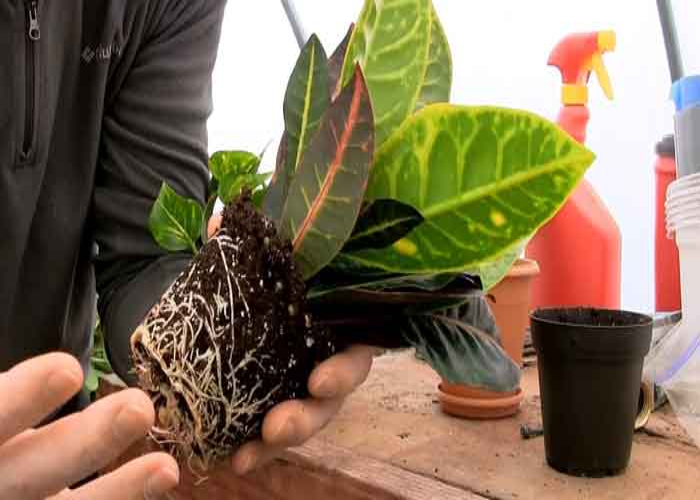
In order to ensure that the crotons have enough space to grow and get adequate amounts of nutrients, it is important to pot them in the right container and repot them when required.
When selecting a new pot for your Croton plan, go with the one having ample drainage holes to prevent the water from accumulating in the soil, which in turn can cause the root to rot. Choose a sturdy container and make sure to repot the Croton plant every year during the first three growing seasons and then after when you see roots growing at the soil level or out of the drainage holes.
Looking Out For Common Pests & Plant Diseases
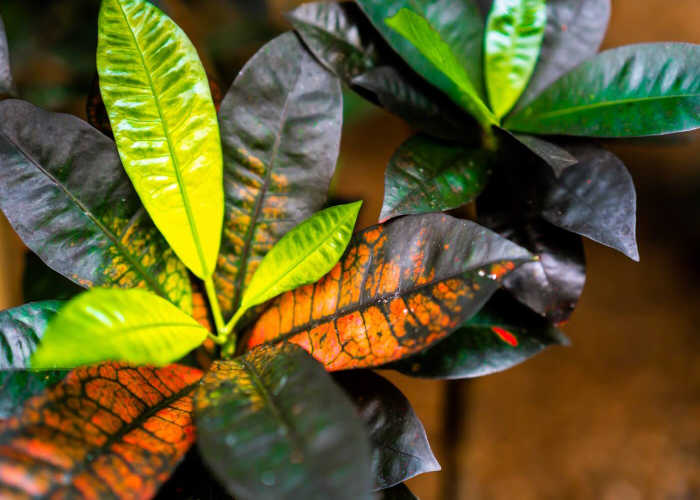
Croton plants are vulnerable to a few plant diseases and pests that can damage their health and appearance. One of the most common diseases that affect Croton is crown gall, a bacterial infection that causes thick, swollen growths on the plant’s stems and leaves. To prevent the spread of this disease, it’s recommended to remove the affected plant, discard it, and sterilize the container and gardening tools thoroughly.
They are also prone to insect infestations such as mealybugs, spider mites, scales, and thrips. These pests can cause stunted leaf growth, leaf dropping, and even death if left untreated. Using pesticides is an effective method to remove these pests, or less harsh alternatives such as horticultural oil or insecticidal soap can also be used.
Some Interesting Facts About Crotons
- The Croton plant is often considered poisonous as its sap is toxic and can cause irritation to the skin and have some adverse effects.
- A Croton tree can grow up to the height of 6 meters,e. 20 feet if grown outside.
- Some croton varieties are often used to produce dyes, oils, and resins for industrial and commercial purposes.
- Some croton species are also used to treat skin diseases, fever, and digestive issues.
Croton houseplant Can be a Colorful Addition to Your Home
All in all, caring for a Croton houseplant requires attention to detail and patience, but it’s worth it for the beautiful and unique foliage it provides. Remember to place the plant in bright, indirect light and keep it in a warm, humid environment. Water the croton regularly, but don’t let it sit in standing water, as this can lead to root rot.
Fertilize the plant once a month during the growing season, and consider repotting it every few years. Keep an eye out for common pests and diseases, such as mealybugs, spider mites, scales, anthracnose, and crown gall, and treat them promptly to prevent damage to the plant.
With the right care and attention, your Croton can thrive and bring colour and vibrancy to your indoor space for years to come.

